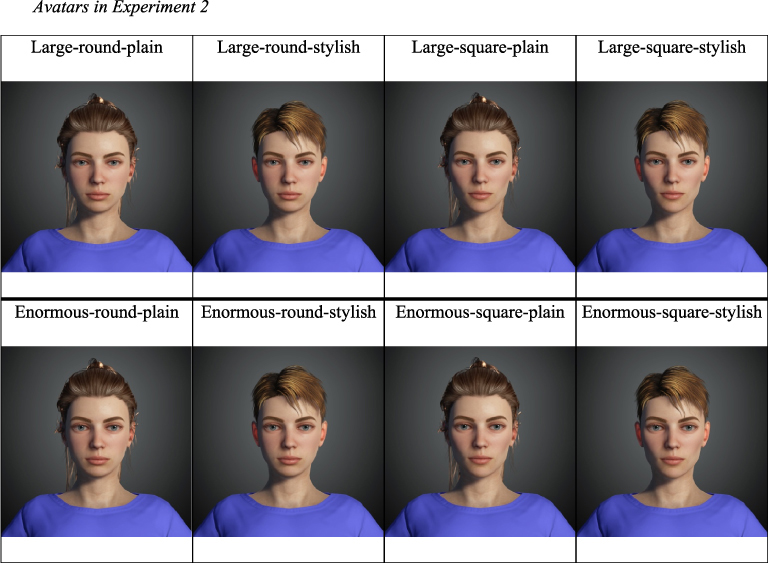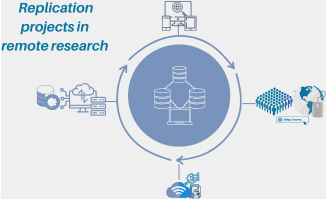
This article examines the influence of facial features on the perception and evaluation of avatars in virtual environments. As people increasingly engage with avatars in virtual spaces, the visual appearance of these digital representations is critical to the design of human-computer interaction. Drawing on research on the evaluation of human faces, this study investigates how facial features influence perceptions of an avatar’s attractiveness, trustworthiness, personality traits, and other characteristics. We conducted two factorial experiments that manipulated the avatars’ eye size, jaw shape, and hairstyle. It was found that larger eyes conveyed a more positive impression and increased perceptions of attractiveness, sympathy, trustworthiness, extraversion, and openness. Although avatars with prominent jawlines were rated as more attractive, a prominent jawline was associated with a perception of higher dominance and threat. Stylish hairstyles were associated with higher extraversion and openness but also with lower conscientiousness. This study provides important insights into the design of avatars for virtual applications like gaming, e-commerce, and online therapy. It highlights the complex interplay between facial features and perception and contributes to the knowledge of how avatars can be optimally designed to create the desired impressions in virtual environments.

In recent years, the need for replication efforts has grown. Replication science faces key challenges, including achieving generalizability across heterogeneous samples and environments while streamlining the theory-experiment cycle to facilitate research efforts. Systematic replication projects using Internet-based methodologies address these challenges by facilitating access to diverse samples, employing rigorous testing, reducing costs, and ensuring materials are readily available. Standards for Internet-based experimenting provides transparency and reproducibility. We present three remote experiments, including one exact replication (N: 410) and two conceptual replications (N: 270; N: 365), which test the mental accounting effect based on Kahneman and Tversky’s classic paradigm. The remote version of the exact replication maintained the same experimental design, instructions, and procedure as the original paradigm. In the two conceptual replications, we adapted the original price to the current value of money: Ticket price and the monetary loss were changed from 10$ to 40€. In the first conceptual replication, we varied the original experimental design: the mental account variable was manipulated within-subjects. In the second conceptual replication, we varied the price stimulus while retaining the mental account manipulation in a between-subjects design. The exact replication replicated the original findings with an effect of small size, while the two conceptual replications replicated the results with an effect of increased size that is more comparable to the original findings. The results highlight the importance of adapting experimental paradigms to the current times, and the advantages of conducting remote replication projects step-by-step.